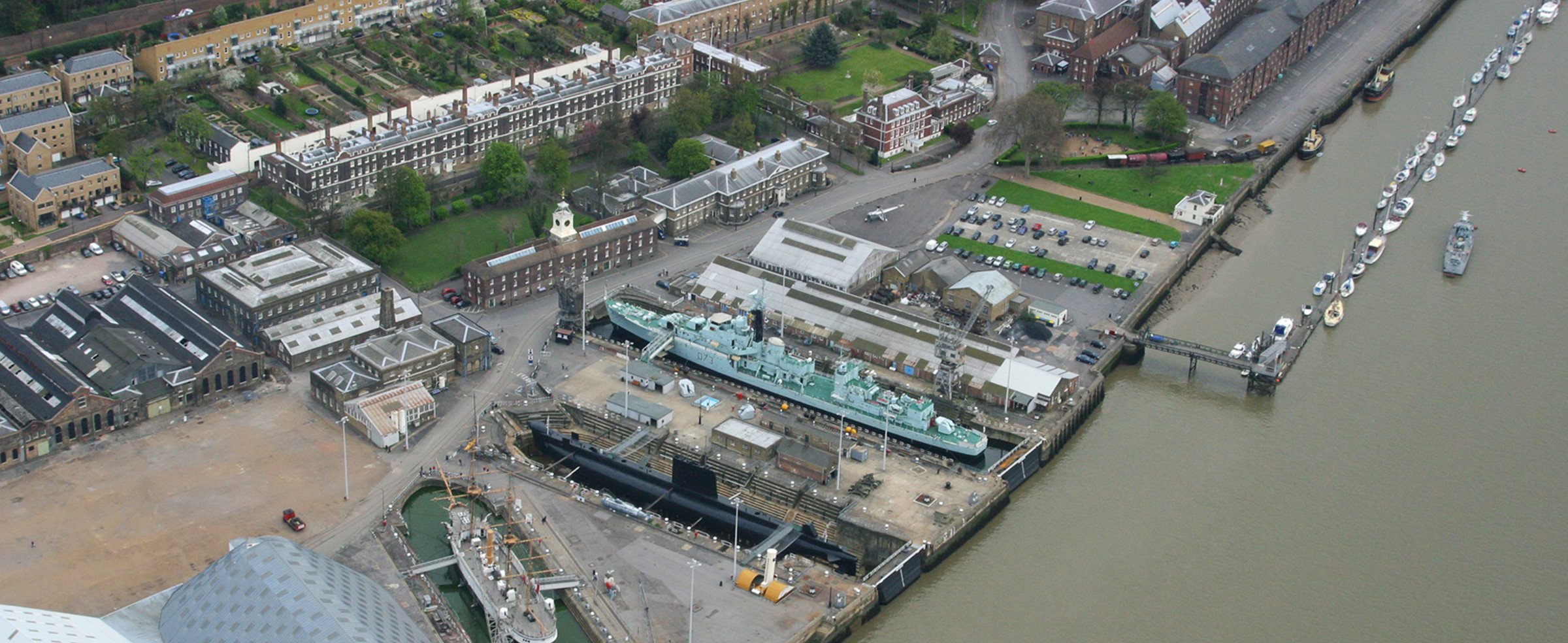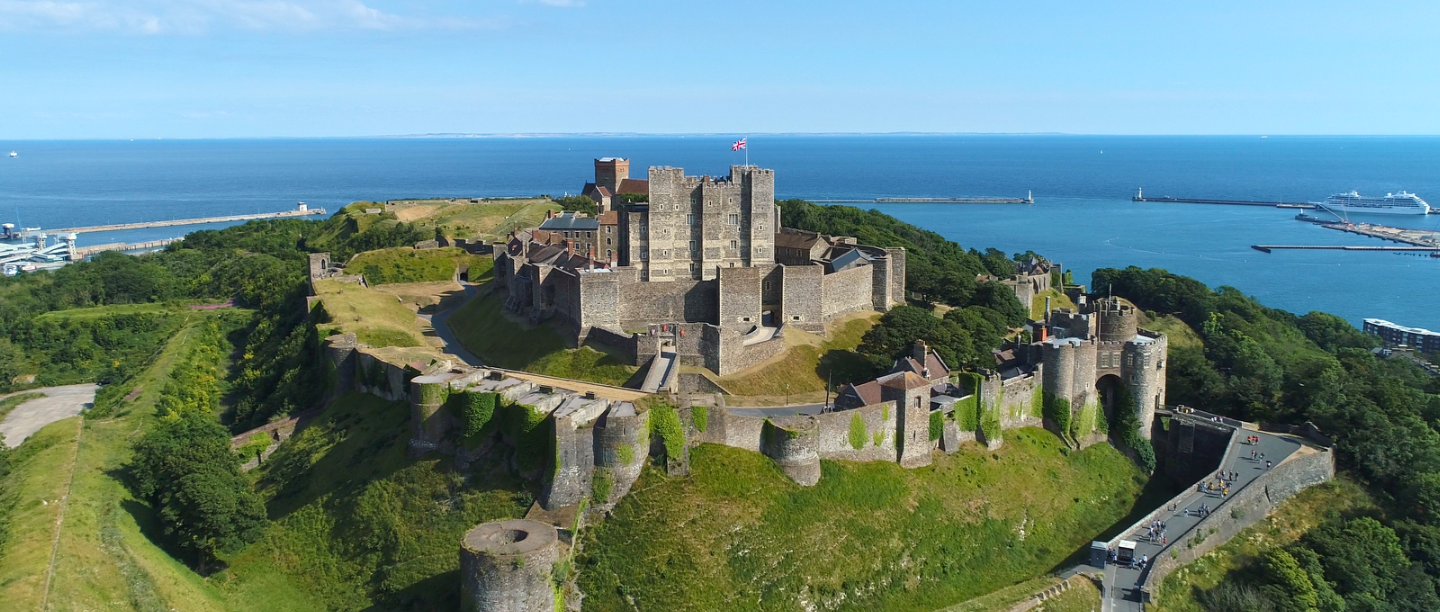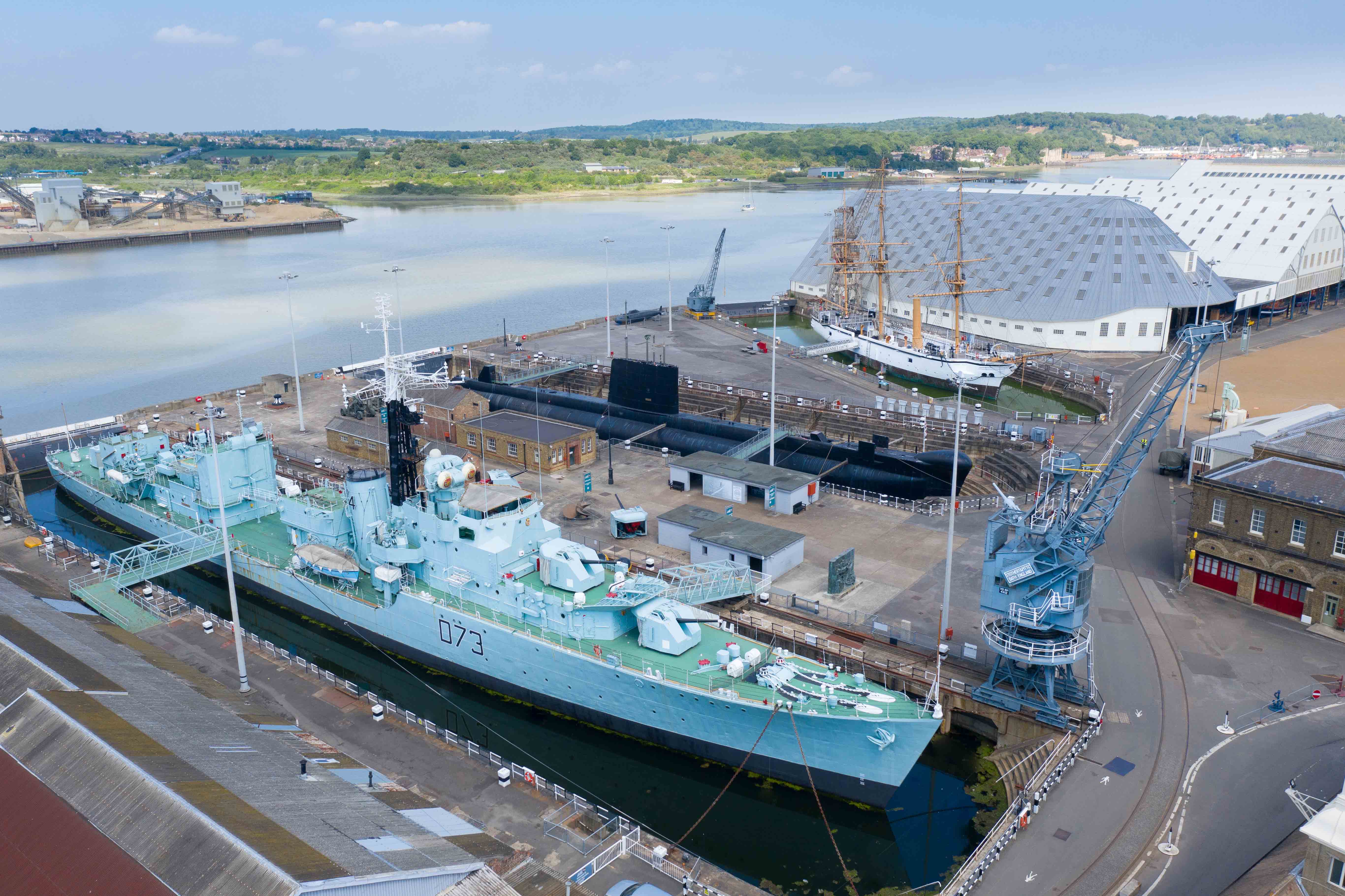Maritime & Military History: Kent's Naval Heritage
Kent's strategic position as the gateway to England has shaped its military and maritime significance throughout history. From medieval conflicts to its pivotal role as the frontline of Britain's naval power, Kent's maritime and military heritage represents one of the most important chapters in England's history. For over 400 years, the county's dockyards, coastal defences, and military installations have protected the realm and projected British power across the globe.

The Rise of Kent's Naval Power
Kent's relationship with maritime defence dates back to Roman times, but it was during the medieval period that the county's coastal towns began to play a significant role in England's naval development. The formation of the Cinque Ports confederation in the 12th centuryâincluding Kent towns Dover, Sandwich, and Hytheâcreated a network of maritime communities that provided ships and men for the realm's defence in exchange for trading privileges and self-governance.
This early naval organisation was the foundation upon which later naval infrastructure would develop. By the Tudor period, Henry VIII's concerns about invasion led to substantial investment in Kent's coastal defences, including the construction of a chain of artillery forts and the establishment of the first permanent Royal Navy.
The Cinque Ports
The original Cinque Ports were Hastings, New Romney, Hythe, Dover, and Sandwich, with the Kent ports playing a crucial role in medieval naval defence. These towns were required to provide the Crown with ships and men for 15 days of service per year. In return, they received privileges including exemption from certain taxes, self-government, and permission to levy their own tolls.
Chatham Dockyard: Heart of Britain's Naval Power
The most significant development in Kent's maritime history was the establishment and growth of the Royal Dockyard at Chatham. Founded in the mid-16th century under Elizabeth I, Chatham Dockyard grew to become Britain's premier naval facility and the backbone of British sea power during the 17th and 18th centuries.
Located on the River Medway, the dockyard's strategic position provided easy access to London while offering protection from enemy attacks. During its heyday in the Age of Sail, Chatham was responsible for building, repairing, and maintaining the ships that secured Britain's naval supremacy and enabled the growth of its empire.
Some of Britain's most famous warships were built at Chatham, including HMS Victory, Admiral Nelson's flagship at the Battle of Trafalgar. The dockyard expanded significantly during the Napoleonic Wars and continued to develop through the transition from sail to steam, adapting to changing naval technologies and requirements.
Notable Ships Built at Chatham
- HMS Victory (1765) - Lord Nelson's flagship at the Battle of Trafalgar
- HMS Temeraire (1798) - Fought at the Battle of Trafalgar, later immortalised in Turner's painting
- HMS Achilles (1863) - One of the first ironclad warships
- HMS Gannet (1878) - Now preserved at Chatham Historic Dockyard
- HMS Ocelot (1962) - The last submarine built for the Royal Navy at Chatham
Chatham Dockyard Timeline
- 1547 - First naval storehouse established at Chatham
- 1570s - Development as a major shipbuilding centre under Elizabeth I
- 1618 - First dry dock constructed
- 1667 - Dutch Raid on the Medway
- 1700s - Major expansion during Georgian era
- 1820s - Steam factory established
- 1984 - Closure of the Royal Naval Dockyard after 400 years of service
Defending the Realm: Kent's Coastal Fortifications
Kent's position as England's frontline against continental threats led to the development of extensive coastal defences throughout history. From Roman shore forts to modern military installations, the county's landscape is dotted with fortifications that tell the story of England's defensive strategy over nearly two millennia.
The medieval period saw the construction of impressive castles at strategic points, including Dover, Rochester, and Canterbury. These fortifications were designed to control key routes and defend against invasion. Dover Castle, with its imposing position overlooking the English Channel, has been described as the 'Key to England' due to its crucial defensive role.

In the Tudor period, Henry VIII's fear of invasion following his break with Rome led to the construction of a chain of coastal artillery forts, including Deal, Walmer, and Sandown in Kent. These distinctive round forts were designed specifically to mount and use heavy artillery against enemy ships.
The Napoleonic era saw further development of Kent's defences, with the construction of Martello towers along the south coast and the impressive Royal Military Canal. These defences were designed to counter the threat of French invasion under Napoleon Bonaparte.
Roman Period (1st-5th centuries AD)
Construction of Saxon Shore forts at Richborough, Dover, and Reculver to defend against Saxon raids
Medieval Period (11th-15th centuries)
Construction of major castles at Dover, Rochester, and Canterbury to control key routes and defend against invasion
Tudor Period (16th century)
Henry VIII's chain of artillery forts built, including Deal, Walmer, and Sandown Castles
Napoleonic Era (early 19th century)
Construction of Martello towers along the south coast and the Royal Military Canal
Victorian Period (mid-19th century)
Construction of Palmerston Forts, including Fort Amherst in Chatham
World Wars (20th century)
Construction of pillboxes, anti-aircraft batteries, and other defensive structures across Kent
HMS Pembroke: The Naval Barracks at Chatham
A significant part of Kent's naval history is HMS Pembroke, the shore barracks established at Chatham. The name was first used in 1878, taking its name from the 3rd rate HMS Pembroke of 1812, which became the Base ship at Chatham. In 1903, the barracks moved ashore to impressive new buildings designed by Sir Henry Pilkington.
HMS Pembroke served as a crucial training and accommodation facility for naval personnel, housing thousands of sailors throughout its operational life. It played a vital role during both World Wars, though it wasn't without tragedy. On 3rd September 1917, during the First World War, the Drill Hall at HMS Pembroke was hit during a German air raid, resulting in the deaths of 130 naval personnelâone of the worst losses of life from an air raid during the war.
The barracks continued to serve the Royal Navy until 1984 when it was paid off as part of wider defence cuts. Today, the impressive buildings have been repurposed and now house the Universities at Medway, preserving this important piece of naval heritage for future generations.
Kent in Wartime: Front Line of Defence
Throughout history, Kent has often found itself on the front line of Britain's conflicts. During the medieval period, the county witnessed frequent raids and invasions due to its proximity to the continent. In the Civil War, Kent was predominantly Parliamentarian, though there were Royalist uprisings in Canterbury and elsewhere.
It was during the World Wars, however, that Kent's position as Britain's frontline became most apparent. In the First World War, the county's ports were crucial for the movement of troops and supplies to the Western Front, while coastal towns suffered from bombardment by German ships and early air raids.
The Second World War saw Kent play an even more pivotal role. During the Battle of Britain in 1940, the skies above Kent became the main arena for aerial combat as the Royal Air Force fought to prevent German air superiorityâa necessary precursor to invasion. RAF airfields across Kent, including Biggin Hill, West Malling, Hawkinge, and Manston, were heavily targeted by the Luftwaffe but continued to operate throughout the battle.
The Battle of Britain and Kent's Airfields
RAF Biggin Hill was one of the most important fighter stations during the Battle of Britain, often referred to as "the strongest link" in the chain of fighter airfields defending London. The station and its personnel suffered greatly under frequent attack, with the airfield being bombed 12 times between August and October 1940, but it remained operational throughout. Today, the Biggin Hill Memorial Chapel serves as a lasting monument to the 454 allied aircrew who lost their lives flying from RAF Biggin Hill during the Second World War.
Following the fall of France in June 1940, Kent became part of "Hellfire Corner"âthe area most vulnerable to enemy attack. Dover and other coastal towns suffered from heavy shelling from German batteries across the Channel, while the entire county endured the V1 flying bomb ("doodlebug") and V2 rocket campaigns later in the war. Some areas of Kent were evacuated completely during the war, including the Isle of Grain and areas of Romney Marsh, which were considered likely invasion points.
The Medway Raid: A Defining Moment in Naval History
One of the most significant events in Kent's maritime historyâand one of the Royal Navy's most humiliating defeatsâwas the Dutch Raid on the Medway in June 1667. During the Second Anglo-Dutch War, a Dutch fleet under Admiral de Ruyter sailed boldly up the River Medway, broke through the defensive chain at Gillingham, and attacked the English fleet at anchor.
The raid resulted in the capture or destruction of several major English ships, including the flagship HMS Royal Charles, which was towed back to the Netherlands as a trophy. The daring attack shocked the nation and demonstrated the vulnerability of England's naval heartland. The raid effectively ended the war in the Dutch favour and led to significant improvements in the defences of the Medway and Thames.
Following this disaster, extensive new fortifications were constructed to protect the naval dockyard, including Upnor Castle's reinforcement and the later construction of forts such as Garrison Point Fort and Fort Amherst. The lessons learned from the Medway Raid influenced British naval strategy and defence planning for generations.
Kent's Naval Decline and Heritage Preservation
The 20th century witnessed the gradual decline of Kent's naval significance. Changes in naval technology, strategy, and Britain's reduced global role following the Second World War led to the scaling back of naval activities in the county. The closure of Chatham Dockyard in 1984, after more than 400 years of continuous operation, marked the end of an era for Kent's maritime heritage.
However, the county's naval and military legacy lives on through preserved sites and museums. The Historic Dockyard Chatham has been transformed into a world-class heritage attraction, preserving historic ships, buildings, and maritime collections for future generations. Dover Castle, under the care of English Heritage, continues to tell the story of Britain's defences from medieval times through to the Cold War, including its role as headquarters for the Dunkirk evacuation in 1940.



Legacy and Contemporary Significance
The military and naval heritage of Kent continues to shape the county's identity and landscape. From the imposing silhouette of Dover Castle to the preserved buildings of Chatham Dockyard, reminders of Kent's strategic importance are everywhere. These historic sites not only attract tourists but also serve as important educational resources, helping new generations understand the county's crucial role in national defence.
Although the Royal Navy no longer maintains a significant presence in Kent, the county's military connections continue through Army and Royal Air Force installations. The rich maritime heritage also influences contemporary culture, with numerous festivals, memorials, and community events celebrating this aspect of Kent's past.
Today, as we reflect on Kent's maritime and military history, we can appreciate how this strategic county has shaped national history. From the development of the Royal Navy to the defence of the realm during times of crisis, Kent's position as the frontline of England's defence has made it a witness toâand participant inâsome of the most significant events in British history.
Visiting Kent's Maritime and Military Heritage
The Historic Dockyard Chatham, Dover Castle, Deal Castle, Fort Amherst, and the Royal Engineers Museum in Gillingham are among the most significant maritime and military heritage sites in Kent open to visitors. These attractions offer insights into different aspects of the county's defensive history and the evolution of Britain's armed forces. The Kent Castles & Fortifications page provides further information about the county's defensive structures.
For those interested in tracing family members who served in Kent's naval or military installations, the Family History & Genealogy section provides guidance on accessing service records and other relevant archives. The Kent History and Library Centre in Maidstone holds significant collections relating to the county's military history, as detailed in our Research Resources section.
